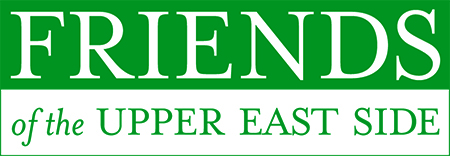
Image: Department of City Planning
The City Council's Subcommittee on Zoning and Franchises is set to vote tomorrow, November 21st, on the City of Yes for Housing Opportunity initiative, the final component of the Adams administration's significant proposal to revise New York City's zoning codes. If approved, this vote would clear one of the last obstacles for the mayor's City of Yes initiative, with a full City Council vote likely at their next meeting following the Thanksgiving holiday.
FRIENDS has actively monitored all three components of the City of Yes initiative, offering testimony at every public hearing and providing feedback on proposed changes, particularly those with potential negative impacts on the Upper East Side. We have also raised concerns about the process itself, highlighting the extremely limited time for public review and the lack of clear justifications from the Department of City Planning (DCP) for some of the most impactful proposals. These issues are especially relevant given the thousands of pages of dense zoning text and amendments involved. Moreover, we continue to challenge the "one-size-fits-all" approach, which may unintentionally weaken standards protecting neighborhood character and affordability.
Impact on Neighborhood Character and Affordable Housing
One of our key concerns is that the plan relies on market forces to drive affordability, under the assumption that increasing housing supply will lower prices. Based on past experience on the Upper East Side, this approach is likely to result in more luxury developments, displacing relatively affordable housing. Two specific amendments could exacerbate this issue by facilitating the development of taller, bulkier towers in areas such as Yorkville, even without using the affordable housing bonus, and thus failing to increase affordable housing stock.
**Modification of Tower-on-a-Base Bulk Regulations (ZR 25-651(b))**
This amendment proposes raising the maximum base height for towers in R10-equivalent districts from 85 feet to 155 feet. This change undermines the original urban design intent of ensuring towers blend with their surroundings, creating a more monolithic and out-of-scale appearance along avenues. FRIENDS recommends retaining the current maximum base height to preserve neighborhood context.
**Changes to Zoning Lots Split by Zoning District Boundaries (ZR 77-22)**
This amendment would permit transferring floor area from lower-density zones (e.g., midblocks) to higher-density zones (e.g., avenues) within a single zoning lot. Combined with increased base heights, this could allow developers to maximize building envelopes without participating in the affordable housing program (UAP). FRIENDS recommends requiring affordable housing provisions as a condition for midblock-to-avenue floor area transfers.
Height Increases in R8B Zoning Districts
Under the Universal Affordability Preference (UAP), the allowable building height in R8B districts would increase by 40%, from 75 feet to 105 feet, compared to a 20% increase in Floor Area Ratio (FAR). This disproportionate height increase incentivizes developers to replace existing midblock tenements, which are a critical source of relatively affordable housing. The proposed heights conflict with the traditional R8B envelope and would result in structures incompatible with the neighborhood's scale and character. FRIENDS recommends maintaining the 75-foot limit or limiting the increase to 85 feet, aligning height adjustments with FAR increases to balance affordable housing development and neighborhood preservation.
Landmark Transfer of Development Rights (TDRs)
COYHO proposes expanding TDR rules to allow transfers across broader areas, including across streets and intersections, without requiring a special permit from the City Planning Commission (CPC). While this change could generate revenue for landmarked properties, it also enables receiving sites to add up to 20% more floor area without any affordability requirements or protections for neighborhood character. FRIENDS advocates retaining the CPC special permit requirement for TDR transfers to ensure oversight, public engagement, and alignment with community priorities.
Modifications to Residential Zoning Standards
Certain COYHO proposals could reverse decades of progress in ensuring adequate light, air, and open space. For example, rear yard size requirements would be reduced from 30 feet to 20 feet, diminishing the “donut holes” within blocks that provide green space and ventilation. FRIENDS urges DCP to adopt a more nuanced approach, tailoring changes to individual neighborhoods and evaluating the trade-offs between increased housing and the preservation of light, air, and open spaces.
Weakening of the Public Review Process
FRIENDS is concerned that COYHO would diminish public oversight by eliminating the special permit requirement for TDRs and relying on CPC authorizations for certain zoning modifications. These authorizations bypass the Uniform Land Use Review Procedure (ULURP) and omit public hearings, reducing transparency and accountability. FRIENDS recommends converting CPC authorizations into special permits to reinstate public hearing requirements and allow community input.
Changes to Madison Avenue Special District Bulk Regulations
COYHO seeks to eliminate a key bulk regulation requiring buildings in the Madison Avenue Special District to taper above 170 feet, creating a distinct pyramidal shape. Removing this requirement would standardize the district’s building envelopes, undermining the unique visual character of Madison Avenue. FRIENDS recommends preserving the tapering rule to maintain the corridor's distinct identity.
---
By addressing these concerns, FRIENDS aims to ensure the *City of Yes* initiative advances housing goals while preserving the unique character and affordability of New York City's neighborhoods.

